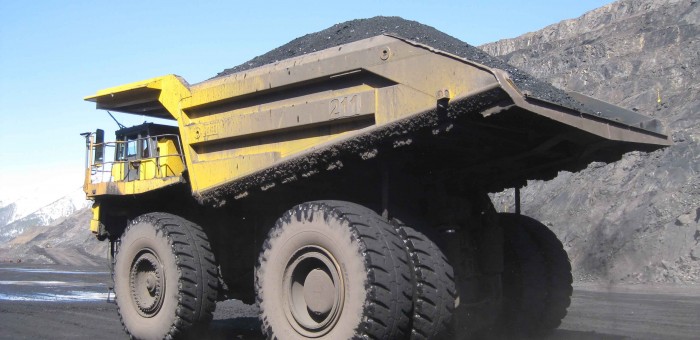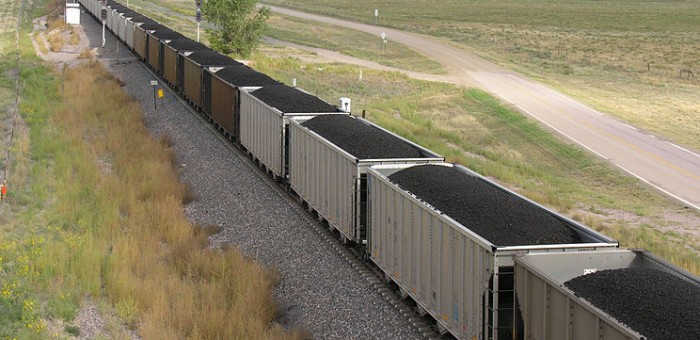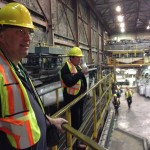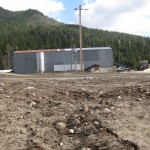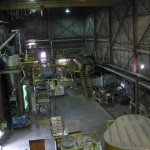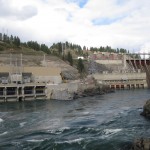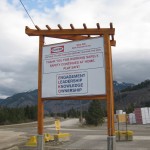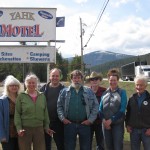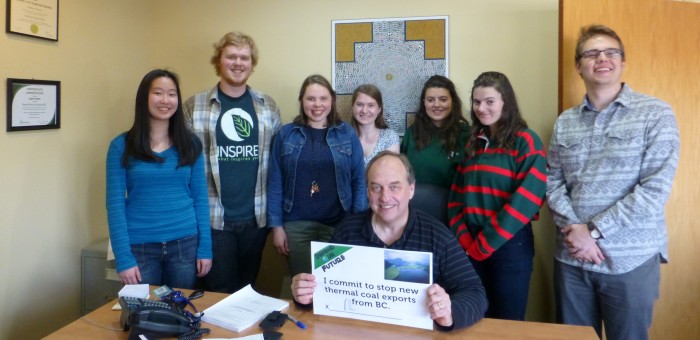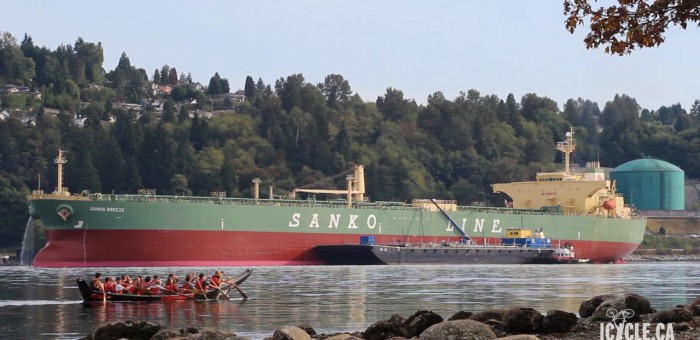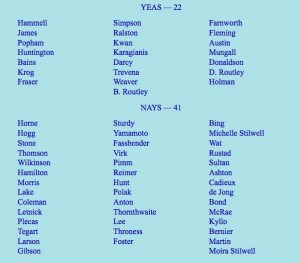Coal
Innovation in British Columbia’s mining sector — a vision for the future
Today I had the distinct honour of providing opening remarks for the Social Innovation in Mineral Exploration Panel at the Association for Mineral Exploration (AME) 2019 Roundup conference in Vancouver.
I took the opportunity to outline a BC Green vision for innovation in the mining sector. Below I reproduce the text of my speaking notes. I’ll post a video of my presentation if I can find one online. I explored the issue of social innovation more thoroughly during my oral presentation.
Text of Opening Remarks
Thank you very much for the kind introduction and for inviting me to speak with you all today.
I must admit that I am very pleased to have the opportunity to make remarks before the panel on innovation and mining. There are few conversations that I think are more interesting in our province right now than how our traditional resource sectors can harness technology and innovation and develop new economic opportunities.
Before I get to that though, I should also let you know that mining is actually near and dear to my heart. As many will know, I am a faculty member on leave from the School of Earth & Ocean Sciences at the University of Victoria — a climate/paleoclimate scientist surrounded by geologists!
I’ve also had a long standing interest in mining stock investing (which, sadly, I’ve had to take a break from since getting elected).
But back to what I am here today to talk to you all about – the opportunity we have to harness innovation in our natural resource sectors – and specifically mining – to build low carbon economic opportunities for communities across our province.
I truly believe that mining is a bedrock industry that sustained communities across our province for many decades. Pun intended.
In my almost 6 years as an MLA I have had the opportunity to visit a number of different mining operations across our province and I’ve seen first hand just how important these projects are to the communities around them.
From the large Teck metallurgical coal mines in the Elk Valley to the Small Eagle graphite play near Nelson; from the Imperial Metals Mt. Polly Mine to Teck’s Highland Valley Copper, the pride that employees and employers take in BC’s rich mining history is evident to me.
With over 30,000 workers directly employed by the sector, and an estimated $9.9 billion contributed to BC’s economy, mining’s importance to our economy today is undisputed.
What I think is less known, but perhaps is even more important, is just how much our mining industry has to contribute to the creation of a low carbon economy.
We are at the start of a major economic shift – one that is taking place right across the world.
Slowly but surely, jurisdictions are recognizing that sustainable economic prosperity must go hand in hand with reducing our carbon pollution.
It’s critical that this isn’t approached as an environmental mission – but as an opportunity to create new, sustainable economic opportunities right across our province even as we reduce our climate pollution.
To seize this opportunity we must be willing to embrace innovation – both in terms of the technologies we use to make our operations more efficient, and economically viable, and in terms of the transition to low carbon technologies.
Let’s look at technology first.
Bryan Cox, the President and CEO of he Mining Association of BC put it very articulately in the Price Waterhouse Cooper 2017 industry update when he said:
“The way I see it, mining is a tech industry and when both sectors grow, the entire province benefits.”
In my opinion, this is exactly the way to view the opportunity technology and innovation provides the resource sector. It is not as some separate force working from the outside – it must be ingrained in what we do.
I think there is a tendency to think of the tech sector as a “south-west” BC industry – one with little direct benefit to other regions of the province.
Certainly, it’s true that there has been a significant expansion in “tech industry” in Vancouver and Victoria. But if you ask anyone involved in this industry, they will tell you exactly what Mr. Cox so succinctly put.
We must view all our industries – especially our long standing resource industries as “tech industries”.
So what does this look like in practice? Let’s talk about one of my favourite companies: MineSense.
The future of economic prosperity in BC lies in harnessing our innate potential for innovation and bringing new, more efficient technologies to bear in the resource sector.
MineSense’s real-time, sensor-based ore sorting technologies embody BC innovation at its finest and provide a perfect example of what’s needed for BC to seize new opportunities from innovation.
BC will never compete in digging dirt out of the ground with jurisdictions that don’t internalize the same social and environmental externalities that we value.
We will excel through being smarter, more efficient, & cleaner.
This means that we not only export the dirt, but we also export the knowledge, technology, and value-added products associated with resource extraction.
And that’s where companies like Minesense come in.
But there is also a second critical opportunity to harness innovation in the mining sector – and that is by embracing the goals set out in Clean BC – British Columbia’s economic strategy to address climate change.
I entered politics back in 2013 to ensure that BC’s strategy to address climate change was put back on track. This wasn’t about simply putting in place new environmental policies.
CleanBC should not be viewed only as a climate plan – it’s an economic vision focused on innovation & opportunities. And B.C. has all the strategic advantages needed to seize these low-carbon economic opportunities.
By tackling the challenges presented by climate change, with carefully designed policies, B.C.’s economy can grow in new ways. CleanBC offers a pathway for B.C. to be on the cutting edge of the low-carbon economy.
For the mining sector I believe that there are two main areas of opportunity: First by embracing the electrification of our mining operations and shifting to lower pollution fuels, and second, by ensuring BC mines – and the minerals and metals we mine for – are directly linked to the growing demand for clean technologies.
The business case for electrification is becoming ever more convincing – both as a driver of cost reduction and efficiency, as well as ensuring companies have the social license to operate.
Seizing the opportunities of electrification and a fuel shift will require close coordination between industry and government. Clean BC starts this process with new incentive programs and policy changes that support a transition.
For example, these programs include a new heavy-duty vehicle incentive program that will provide funding to promote the purchase of energy efficient equipment for large transport trucks.
Our goal is to have the cleanest industry in the world – one that leverages our abundant renewable electricity in their industrial operations.
These changes won’t happen overnight – and no one seriously would expect them to. But we must be committed to embracing new innovations when they come along. And government must do its part to ensure that companies who are serious about electrification have access to the reliable electricity they will count on.
There is one other area where I believe government and industry must work together to harness the power of innovation and technology.
We must ensure that the standards that regulate our mining industry are kept up to date, and that in addition to the economic benefits mining provides our province, its social and environmental impacts are being accounted for.
The Mt. Polley tailings pond breach hurt public confidence in government and industry’s ability to adequately protect the natural environment during mining operations. Public trust and confidence is a critical component of a successful mining industry.
The way to build public trust is clear – we must ensure that our operations leverage the best available technology and the best available practices. Innovation cannot be a buzz-word we use – and this is something government is particularly guilty of. Innovation is more than just the latest technology. It is a way of operating where we are committed to evidence based decision-making and solving problems before they arise.
Once again, this is something the government and industry must work together on.
So how do we put this altogether? How do we embody a way of operating that is committed to innovation?
For me, there has been one piece in particular that has been missing from most governments approaches when it comes to harnessing innovation and really developing a new economic road map for our province.
What’s missing has been “vision”.
We won’t be able to harness the true economic potential of innovation by accident.
We won’t be able to meet our climate targets and develop new economic opportunities by accident.
We must know what future we want to build and drive towards.
This is what the BC Greens started with our initial innovation policies.
The first piece was the Emerging Economy Task Force.
We proposed the Emerging Economy Task Force to enable government to adapt and respond to changes on the horizon. We need to modernize government so that it is considerably more responsive to technological innovation.
The role of the Emerging Economy Task Force is to look to the future, identify emerging trends and advise government on how to maintain our competitiveness and achieve prosperity amidst these changes.
The second item from our platform that we integrated into our agreement with the NDP is the Innovation Commission (now Innovate BC) as well as the appointment of an Innovation Commissioner.
The innovation commissioner was proposed to be an advocate and ambassador on behalf of the B.C. technology sector in Ottawa and abroad, to enable B.C. companies to more easily tap into existing federal programs and build key strategic relationships.
By getting these two pieces in place, we have started to change the conversation about innovation policy in government.
We are now at an all-important next step.
In the coming months, the BC Greens want to have a deliberate conversation with stakeholders across British Columbia about innovation, and how government and industry can work together to build new economic opportunities.
We want to understand the barriers that you think need to be removed, and the opportunities you think we can seize.
With the budget in the Spring I expect to see Clean BC fully funded and start to roll out. This will provide a critical opportunity for a conversation about BC Hydro’s role in supporting the electrification of industry, and innovation in general.
The future I imagine is one where our natural resource sector is globally known as the cleanest and most innovative in the world.
I want to be a jurisdiction where companies try out cutting edge technologies to enhance the efficiency of our operations.
I want us to be ever more connected to the global supply chain for minerals needed to construct the solar panels and wind turbines we use to power our economy and the electric vehicles we use to navigate our roads.
I want to see the growth of B.C.’s technology sector as an asset that facilitates greater innovation through technology usage and partnerships with other economic sectors.
This is my vision. It’s not easy – but I think BC is up to the challenge.
Thank you for your time.
Government Response to Questions about FSD Air Quality Case
Right now, Metro Vancouver is embroiled in a court case with Fraser Surrey Docks LP (FSD). The outcome of that case, which is being fought over a relatively minor $1000 fine, will have important implications for our province’s ability to regulate air quality.
Here’s the essence of it: Air quality falls within provincial jurisdiction. This means that the provincial government has the power to set and enforce air quality standards. The British Columbia government has chosen to delegate some of that authority to Metro Vancouver so that it can enforce those standards on behalf of the province. When Metro Vancouver tried to enforce its standards on FSD after soy bean dust was discharged in a manner contrary to regulations, the port refused to pay the fine. Their view is that ports are federal lands, under federal jurisdiction— provincial air quality laws do not apply in the same way. So the courts now have to decide if the province has the power to regulate air quality at FSD.
Why does this matter?
Because if the province can regulate air quality on port lands, it could theoretically use that power to stop certain port activities, like the expansion of thermal coal exports that is currently underway at FSD.
Thermal coal is the single biggest contributor to global warming. Unlike metallurgical coal, which is mined in B.C, thermal coal passing through our ports largely comes from the U.S., meaning that it contributes to only a handful of B.C. jobs. Stopping the expansion of these exports would represent an important step forward in the transition to a low carbon economy.
Yet, there’s also a bigger issue here: British Columbians should have a right to regulate their own air quality. After all, we’re the ones that breathe it.
Given the significance of this court case for our province, I asked the government to clarify its role. Specifically, I asked:
- What is the government’s position on the validity of the ticket (#006035) issued to Fraser Surrey Docks LP by the Greater Vancouver Regional District for the discharge of air contaminants?
- In your government’s opinion, how far reaching are the powers surrounding air quality that you have delegated to the Greater Vancouver Regional District? Do they include federal port lands?
- What is the historic and current involvement of the province in this case?
- Following question three, does the province have any plans to either remain involved or get involved in this case in the future? If so, what are these plans?
Yesterday, I received a disappointing response from the Minister of the Environment, Mary Polak. While her letter acknowledged the importance of the court case, she was clear that the government “will await the court’s decision before commenting further.”
I understand the desire not to comment on a matter that is before the courts. Yet, I would hope that with an issue as fundamental as the quality of our air, our government would be more open with British Columbians about the role they are taking in the case.
The courts will rule in the coming months on the validity of this air quality permit. When they do, we should all be looking to the provincial government to see what it will do to help stop the expansion of thermal coal exports and to protect our right to healthy air in B.C.
Celebrating Mining Week in British Columbia
This week we celebrate mining in British Columbia. From May 3-9 events will be held across British Columbia to highlight the importance of mining to British Columbians.
B.C.’s mining industry is one of the pillars of our economy. In 2013, the year for which most recent data is available, the mining sector contributed $8.5 billion to BC’s GDP and employed 10,720 British Columbians. It further contributed $511 million in tax revenues to provincial coffers. Mining forms the backbone of many rural communities throughout the province, supplying us with the resources we need to enjoy the prosperity we are so fortunate to have in B.C.
Our mining industry continues to play a pivotal role in facilitating the transition to a 21st century economy. For example, without metallurgical coal, we cannot manufacture steel. Without graphite, we cannot build lithium ion batteries.
It is for this reason that I travelled to the Kootenays in April to learn more about the opportunities and challenges facing our Mining Industry in B.C. What follows is a brief report on two tours I did while I was there.
Teck Resources Ltd Metallurgical Coal Operations
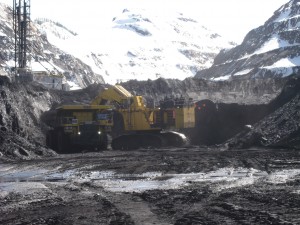 Employing roughly 7,960 people and contributing $6.5 billion in gross mining revenue, Teck Resources Ltd is Canada’s largest diversified resource company, with many of its assets in metallurgical coal mining. I reached out to Teck Resources because I believe it’s important to have a clear understanding of British Columbia’s coal industry.
Employing roughly 7,960 people and contributing $6.5 billion in gross mining revenue, Teck Resources Ltd is Canada’s largest diversified resource company, with many of its assets in metallurgical coal mining. I reached out to Teck Resources because I believe it’s important to have a clear understanding of British Columbia’s coal industry.
Five of Teck Resources’ thirteen mines are located in the Elk Valley in the Kootenays where they extract metallurgical coal. While I was there, I had the opportunity to meet with representatives from Teck Resources and to tour their Coal Mountain operations.
Those who have read my previous coal-related posts know how important I believe it is to distinguish between thermal coal, which is used for coal-fired power plants, and metallurgical coal, which is used in the production of steel. Metallurgical coal is used to produce coke. This is done via heating the coal to very high temperatures (>1000°C) in the absence of oxygen. The resulting almost pure carbon is then mixed with iron ore to create the molten iron that is turned into steel.
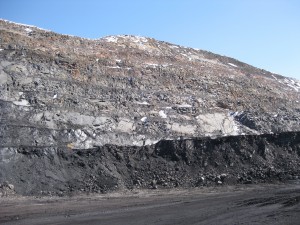 Thermal coal, on the other hand, is the single biggest contributor to greenhouse gas emissions in the world. It is also the most widely available of all fossil fuels and we produce very little of it here in British Columbia. Thermal coal has smaller carbon content and higher moisture content that metallurgical coal thereby precluding its use in steel making.
Thermal coal, on the other hand, is the single biggest contributor to greenhouse gas emissions in the world. It is also the most widely available of all fossil fuels and we produce very little of it here in British Columbia. Thermal coal has smaller carbon content and higher moisture content that metallurgical coal thereby precluding its use in steel making.
The overwhelming majority of thermal coal that is shipped through British Columbia ports is sourced from the United States. That coal travels through B.C. ports because Washington, Oregon, and California have taken a stand to curb their own thermal coal exports. To quote from the governors of Oregon and Washington “We cannot seriously take the position in international and national policymaking that we are a leader in controlling greenhouse gas emissions without also examining how we will use and price the world’s largest proven coal reserves.” Here they were acknowledging that the United States has the largest reserves of thermal coal in the world (237,295 million tonnes) and that their domestic market is dropping as natural gas generation increases and more renewables are brought on stream.
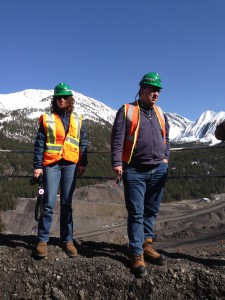 Teck Resources produces metallurgical (not thermal) coal here in British Columbia. The fact is that metallurgical coal is essential for building everything from windmills to electric cars because without it, you cannot have steel. Teck Resources’ five metallurgical coal mines in the Elk Valley employ about 4,000 people and together contributed $140 million in taxes to the province in 2014. Touring Teck Resources’ Coal Mountain mining operation offered an excellent view into the scale and complexities of modern metallurgical coal mining in British Columbia. I was extremely impressed by steps Teck has taken to ensure their metallurgical coal operations were as environmentally sensitive as possible. These include their approaches to reclamation, greenhouse gas reductions, acquisition and preservation of parkland for future generations, and their state of the art water treatment operations that will commence in the Fall of this year.
Teck Resources produces metallurgical (not thermal) coal here in British Columbia. The fact is that metallurgical coal is essential for building everything from windmills to electric cars because without it, you cannot have steel. Teck Resources’ five metallurgical coal mines in the Elk Valley employ about 4,000 people and together contributed $140 million in taxes to the province in 2014. Touring Teck Resources’ Coal Mountain mining operation offered an excellent view into the scale and complexities of modern metallurgical coal mining in British Columbia. I was extremely impressed by steps Teck has taken to ensure their metallurgical coal operations were as environmentally sensitive as possible. These include their approaches to reclamation, greenhouse gas reductions, acquisition and preservation of parkland for future generations, and their state of the art water treatment operations that will commence in the Fall of this year.
Now, Teck Resources does not only produce metallurgical coal. They also own and operate Highland Valley Copper and the integrated zinc and lead smelting facility in Trail. If we actually include all of Teck Resources’ operations in our province, this one company accounted for 21% of all BC exports to China in 2013. That year Resources directly employed 7,650 full-time workers with an average salary of $100,000 per year. They are expanding their operations in British Columbia and presently there are 28 job openings within the company.
Eagle Graphite
 Whereas Teck Resources is British Columbia’s largest mining company, many of B.C.’s junior mining companies are quite a bit smaller. Eagle Graphite Mine is one of them.
Whereas Teck Resources is British Columbia’s largest mining company, many of B.C.’s junior mining companies are quite a bit smaller. Eagle Graphite Mine is one of them.
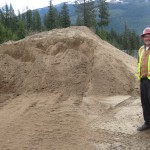 Located in the Slocan Valley, Eagle Graphite is one of only two flake graphite producers in North America and the only one in British Columbia. Graphite is an essential component of lithium ion batteries, which are used in electric vehicles. In fact, about 95% of a lithium battery is made up of graphite. About 50 kilograms of graphite is contained in an electric car, 10 kilograms in a hybrid vehicle and 1 kg in an electric bike. Laptops and mobile phones contain about 100 grams and 15 grams, respectively.
Located in the Slocan Valley, Eagle Graphite is one of only two flake graphite producers in North America and the only one in British Columbia. Graphite is an essential component of lithium ion batteries, which are used in electric vehicles. In fact, about 95% of a lithium battery is made up of graphite. About 50 kilograms of graphite is contained in an electric car, 10 kilograms in a hybrid vehicle and 1 kg in an electric bike. Laptops and mobile phones contain about 100 grams and 15 grams, respectively.
By the end of the decade, graphite demand for electric vehicles produced in North America is projected to increase substantially, far exceeding current supply. The team at Eagle Graphite has been working hard to take advantage of this projected supply gap by proving their reserves and developing methods to efficiently extract graphite from their quarry reserves. And one of the interesting tidbits I picked up on the tour was that golf course grade sand is the by-product of producing graphite!
Touring Eagle Graphite offered a helpful insight into the opportunities and challenges faced by smaller mining firms.
Summary
My brief trip to the Kootenays highlighted the diversity of resource opportunities that have been capitalized upon in the area. What impressed me most at the locations I visited were the steps taken by all companies involved to ensure sustainability of their industry for decades to come with minimal environmental footprint. Whether it be Teck Resource’s Elk Valley coal operations or their Trail smelter powered by the Waneta Dam, Eagle Graphite’s small operation, Canfor’s Elko Mill, or Columbia Power’s Waneta Expansion Project, everyone I met was beaming with pride at the work that they do, their safety records, and the care they take to ensure their operations are as clean and sustainable as possible. After all, these people are locals and the industrial operations are literally in their backyard.
Finally, a highlight of my trip truly had to be that I can now say triumphantly “I’ve been to Yahk and Back”.
Defend Our Future Rally at OBGH MLA Office
On April 8th, a group of well-informed and passionate young people gathered at the Oak Bay-Gordon Head MLA Constituency Office as part of the Defend Our Future BC Day of Action on Climate Change. This was one of 23 meetings organized at MLA offices in 12 cities across BC. The purpose of the meeting was for the youth to express their opposition to the expansion of thermal coal exports from BC. They voiced their concern about the Port Metro Vancouver proposal to increase exports of American thermal coal through the Fraser-Surrey Docks coal transfer facility and through the Texada Island facility by 8 million tons annually and the risk to the health and well-being of communities in proximity to rail lines, port facilities and power plants.
Each of the youth in attendance spoke about why they came to the meeting and how they expect their elected leaders to defend their future. They spoke of the need to reduce the use of thermal coal as a means of producing electricity and the need to develop renewable energy sources to mitigate global climate change. It was inspiring to hear from these young people as they led the dialogue about issues that matter to them, their future and the future for generations to come.
Trying to Protect the BC coast from expansion of thermal coal & diluted bitumen exports
During the committee stage of Bill 12, The Federal Port Development Act on Thursday afternoon, I put forth a number of amendments in an attempt to protect the British Columbia coast from the expansion of thermal coal and heavy oil (diluted bitumen) exports. These were the amendments mentioned in my earlier post on Bill 12. All amendments were defeated. Below I provide a brief excerpt from Hansard.
First Amendment
A. Weaver: With respect to the minister, the reason I have troubles with this legislation is…. We are not debating the Canada Marine Act. I will come to that.
Under the Canada Marine Act, the federal government can sell federal land in a port to a port authority, which could be administered by the province of British Columbia. In selling the land to the port authority, the Species at Risk Act and the Canadian Environmental Assessment Act no longer have any jurisdiction because the land is no longer owned by the federal government. It is now within the port authority, administered by the province of British Columbia.
My concern, therefore, with respect to an undertaking is that heavy oil or thermal coal experts would then no longer have to worry about Species at Risk or Canadian Environmental Assessment Act implications in any development there. The problem with that is that we don’t have anything in the province of British Columbia as a Species at Risk Act.
In essence, what’s happening in accepting an agreement like this, through an undertaking involving either coal or heavy oil, as we will discuss in section 3, is we are essentially saying that we in British Columbia can exempt such development from the federal Species at Risk Act and we have nothing to fall upon here in British Columbia. We can fall on the Environmental Assessment Act.
Frankly, with respect to what we’ve seen with Kinder Morgan and Enbridge, the province has done an admirable job in terms of representing the interests of British Columbia. I have not seen that with respect to thermal coal, and for this reason I do have two amendments I would like to bring here to specifically exclude from ‘undertaking’.
[To amend as follows:
By adding the text shown as underlined:
Section 1
“undertaking” means an undertaking, or an undertaking in a class, designated for the purposes of section 64.1(2)(a) of the Canada Marine Act; excluding an undertaking, or an undertaking in a class, relating to the import or export of thermal coal.]
That is the first amendment I so move.
The Chair: The amendment was proposed by the member for Oak Bay–Gordon Head. It reads: “‘undertaking’ means an undertaking, or an undertaking in a class, designated for the purposes of section 64.1 (2)(a) of the Canada Marine Act, excluding an undertaking, or an undertaking in a class, relating to the import or export of thermal coal.”
Amendment negatived on the following division:
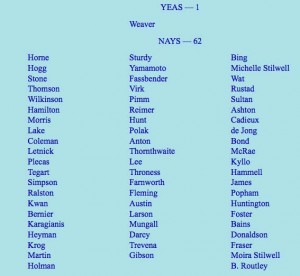
The Chair: Hon. Members, stay in your seats. The member is going to move another amendment.
Second Amendment
A. Weaver: As I mentioned earlier, I have a legal backgrounder from West Coast Environmental Law, which talks about the passage of Canada Marine Act, which we’re talking with respect to the “undertaking” definition here.
That would significantly increase the powers of port authorities, allow the federal government to off-load its responsibility over shipping in federal ports, etc. The changes now allow port authorities to buy federal land and infrastructure from the government and then lease those lands to companies or authorize companies to use them for as long as the port authority has control over them.
Once sold, those lands would no longer be federal property, meaning they would not be subject to terrestrial species protection under the Species at Risk Act.
Seeing as we have no species at risk act here in British Columbia, this raises some concern, which is why I move, again, an amendment to amend as follows:
[By adding the text shown as underlined:
Section 1
“undertaking” means an undertaking, or an undertaking in a class, designated for the purposes of section 64.1 (2)(a) of the Canada Marine Act excluding an undertaking or an undertaking in a class relating to the import or export of heavy oil.]
In light of the fact that we do not import heavy oil that probably is moot, but certainly export is a big issue that’s facing us now.
The Chair: Hon. Members, if the House waives the time we will proceed right away. Do we have consent?
Leave granted.
Amendment negatived on the following division: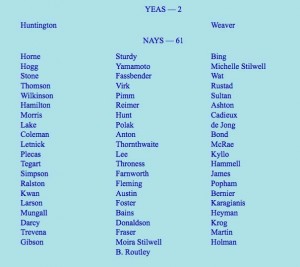
Third Amendment
A. Weaver: Thank you to the minister for the answer. My concern here is that the province would enter an agreement and potentially get into a position where the Species at Risk Act is not applicable or in force. I have an amendment here I’d like to move, which is to amend section 2 as follows:
[By adding the text shown as underlined:
Section 2
With the prior approval of the Lieutenant Governor in Council, a member of the Executive Council may enter into an agreement on behalf of the government.
If
(a) the province has first enacted provincial legislation comparable in power and scope to the Species at Risk Act (S.C. 2002, c. 29), and
(b) any and all port developments subject to the agreement that would have previously triggered a review under the Species at Risk Act (S.C. 2002, c. 29) prior to the royal assent of Bill C-43 (2014), automatically trigger a review under the legislation referenced in subsection (a).]
On the amendment.
A. Weaver: This is a piece of legislation trying to ensure that British Columbia enforces species-at-risk legislation. If it doesn’t enforce the federal one — which it can’t, of course — it has to produce its own if it’s going to enter an agreement as per the discussion here.
The Chair: Hon. Members, it’s an amendment moved by the member for Oak Bay–Gordon Head regarding the Species at Risk Act.
Amendment negatived on the following division:

